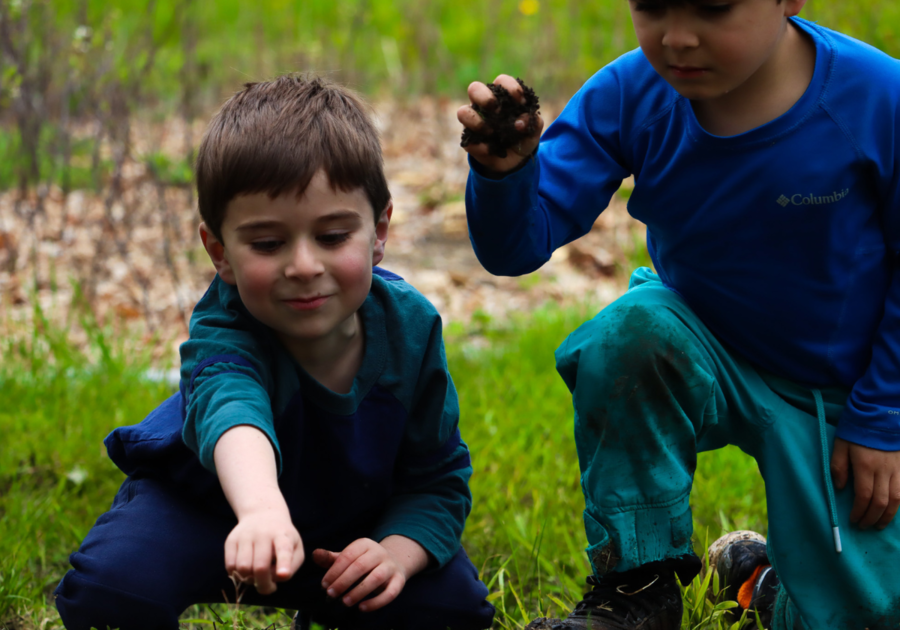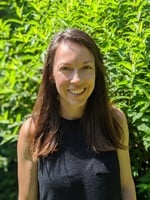Have you ever considered why certain spaces are designed the way they are? The American classroom is organized, regimented. Blocks of time are scheduled for learning individual subjects, and often teachers use slideshows and textbooks to inform the young folks they educate on the things that make up the world, and more importantly, the test sheet.
But how often is the world regimented like that? The very thing that we’re trying to prepare these kids for is wild, confusing, and hands-on. It’s a chaotic place where lessons come haphazardly, and for most the lessons we teach in a sterilized classroom crop up in ways much less straightforward than the vacuum of a piece of paper.
I want you to imagine a different sort of classroom. A classroom that more mimics the world we find ourselves navigating every day. A classroom that countless parents and educators agree that we need.
If you remove the building, there can’t be any classrooms. Without classrooms, there aren’t any white boards or desks, which makes strict lesson planning nearly impossible. If we replace the building with a parachute tent tied to some oak trees, the floor with wood chips and moss, it gives kids a lot of textures to explore and interact with. Some would call this distraction, but that only works if your lessons are being taught in theory, not in practice.
Oh, and instead of a playground that the kids get to escape to when they’re overly worked, we integrate the lessons into the playground itself, and make the playground acres of land to be explored and invented upon. Suddenly, the burden of learning becomes part of the game, and the sheer joy of play can mix in freely with the necessity of study.
Why would we create spaces that mimic the world when we can embrace it organically? Why suppress the passions of our teachers behind strict curriculum when we can push them to be active and exploratory alongside the children? Why suppress a child into silence behind a desk, when we can engage them in the place they want to be?
That is the principle behind our Forest Preschool and the reality for our students every day. Forest School comes from the idea that students learn better when the lessons come naturally. If we want kids to become lifelong learners, we need them to love school and we need to have a school that they will love.
Kids are diverse, and so are their needs. The most common factor parents focus on is whether or not a school can meet their child’s needs. Some thrive in competitive environments, some are excited to read and write all day, some need near constant movement. Certain children need consistent adult support while others want to learn on their own. This is something that is hard to attain in a traditional classroom. When you remove those boundaries, these differences are much easier to accommodate. Individualized approach to education combined with the outdoor setting allows Forest School teachers the freedom to really meet the needs of each child.
But how does Forest School actually work?
Our all-year program is built to facilitate outdoor lessons and teach your child to thrive in the outdoors. Forest School students learn which berries are safe to eat and which to avoid, they learn about the life cycles of frogs because they watch tadpoles being born. They learn about temperature, states of matter, geology, forest health, mushrooms, gardening, bird songs, all through hands-on experiences. When the teachers want to teach basic math, we gather acorns to use as counters. When we want to cover physics, we build a balance beam out of lumber. Learning in a classroom comes from the abstract where kids watch videos, complete worksheets, and do holiday crafts. Kids in Forest school learn by doing rather than by representations.
It’s natural to have questions regarding weather and safety in a fully outdoor classroom. In winter months, our half-day preschoolers spend hours outside with nothing but weatherproof clothing, a big tent, a campfire, and the expert guides that instruct them. This gives children the gift of self-sufficiency that they can’t find in other spaces. It allows them to learn resilience, and how to verbalize their needs.
Safety is a priority at our school. In an ever-changing environment like this one, evaluating risk is key. We often say that we do not keep the children as safe as possible, but as safe as appropriate. Many studies have shown that risky play can be instrumental in reducing the risk of anxiety, strengthening a child against injury, and even increase the ability to solve complex problems. It’s our teacher's top priority to understand and balance the risks and rewards of each activity.
It's a regular part of school for kids to find themselves up in a tree, happy as a clam, with a teacher secretly keeping track of their safety and ready to intervene if needed. Removing risk does not make a child safer, only less prepared.
To summarize our goals, it’s as simple as exposure. So many children grow up learning in a vacuum, interacting with watered down or entirely inaccurate versions of the world we live in. They’re relegated to a playpen, a desk, a container too small to fit their rambunctious and curious nature. That’s something we need to cultivate, not cure them from.
Ask yourself, why are spaces designed the way they are? Today’s structures were decided upon in a time where children weren’t supposed to question things, where people were supposed to stay in line. They were created in a time where individuals weren’t seen as such. Today, we’re changing that. Everyone realizes that a child needs to be able to think freely, to have autonomy over their body and mind. Why aren’t our classrooms changing too? What’s stopping us?
The Rewilding School has a simple answer. Nothing.
There are a lot of great choices for preschool in Westchester. If you’re looking for a program that will meet your child’s needs, challenge them, and set them up for success both in the classroom and beyond it, we may be the right fit for you. We have half-day classes from September-June in Croton-on-Hudson and Mount Kisco. If you want to see our site or learn more, please visit us at info@rewildingschool.com.



